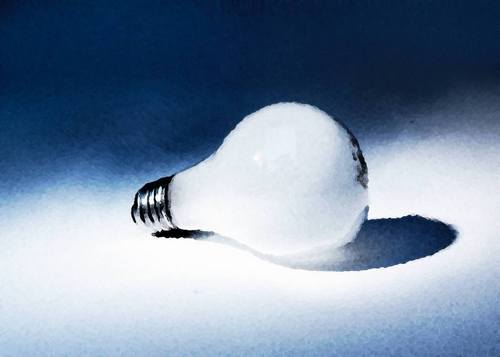New light bulbs have arrived and the old versions of 100 watt bulbs and 75 watt bulbs have begun to disappear from store shelves. The new light bulb laws now mean that the old, hot, inefficient 100 watt light bulbs that power old-fashioned Easy Bake Ovens are no longer available. Is the new light bulb law a problem, or will this just be a phase that quickly passes.
Low Flow Toilet Law
Around twenty years ago, in 1992, Congress passed a law mandating that all toilets be low-flow toilets. A low flow toilet can only use 1.6 gallons per flush. The law went into effect a few years later. The implementation and after effects of this law may be instructive in looking toward how the new light bulb law will work out.
 When the ban against higher per flush gallon toilets first went into effect, the reaction was pretty much the same. The opposition to the law insisted that higher gallon per flush toilets were superior for various reasons. In fact, early low flow models did not work as well and were prone to clogging for some people. There were report of some builders hoarding older toilets, and even stories of people bringing in higher flow toilets from Mexico. Critics of the law pointed to these issues as proof that the law was a failure, and insisted that the market should decide. The law was held up as exactly the kind of thing that government should not regulate.
When the ban against higher per flush gallon toilets first went into effect, the reaction was pretty much the same. The opposition to the law insisted that higher gallon per flush toilets were superior for various reasons. In fact, early low flow models did not work as well and were prone to clogging for some people. There were report of some builders hoarding older toilets, and even stories of people bringing in higher flow toilets from Mexico. Critics of the law pointed to these issues as proof that the law was a failure, and insisted that the market should decide. The law was held up as exactly the kind of thing that government should not regulate.
However, over the next few years, things changed. Manufacturers, who could no longer rely on making their toilets work simply by throwing more water down the drain had to actual put some time, money and effort into better designs. This investment would have never been made without the law, in part because the end consumer often does not buy the their toilet directly. Instead, builders, apartment managers, and others buy the toilets without input from the end users. The result is a trend toward the cheapest toilets, offering no incentive for “better” toilets.
The new and improved low-flow toilets saved millions of gallons of water every year. This was particularly helpful in areas like Colorado where droughts followed huge housing booms. Reservoirs that ran near critical low levels would have fared much worse if those decades of construction had included higher water use toilets.
Today, only 1.6 gallon toilets are sold, millions of gallons of water are not wasted, and no one really notices or cares. Certainly, no one brings in old toilets from Mexico.
Old Light Bulb Hoarding and Nostalgia
So, what lessons can we draw from the laws to regulate toilet flushing?
Chances are that the first few years of newer light bulbs will have issues. Manufacturers, now forced to deal with developing better light bulbs that don’t have to compete against the cheapest possible bulbs, will likely improve the technology quickly. Ramping up production to full levels of scale will mean that prices will drop. Soon, the only reason to have older, incandescent bulbs will be nostalgia, or those who claim that the light is “better.”
In other words, don’t panic. By this time next decade, no one will remember or care that Congress banned high watt light bulbs and society will be silently reaping the benefits of a nationwide reduction in the usage of power. But, rest assured that more than a few folks will have horror stories and studies will point to the wasted dollars caused by the new law in the meantime.